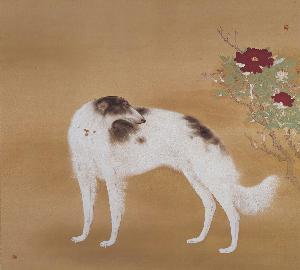Hashimoto Kansetsu
橋本関雪;Hashimoto Kansetsu
장소: Kobe
타고난: 1883
죽음: 1945
전기:
Hashimoto Kansetsu was a prominent Japanese painter who specialized in nihonga, a style of Japanese painting that emerged during the Meiji period. Born on November 10, 1883, in Kobe, Japan, he was the son of the painter Hashimoto Kaikan, from whom he gained a love of Chinese culture.
Early Life and Training
Hashimoto Kansetsustudied at Chikujokai, a private school established by the famous nihonga painter Takeuchi Seihō. However, he eventually withdrew due to differences of opinion. In 1921, he visited Europe, and after that, spent part of almost every year in China, where he drew inspiration from Chinese scenery and classical literature.
Artistic Style and Inspiration
Many of Hashimoto Kansetsu's paintings were inspired by Chinese scenery or Chinese classical literature. His former residence in Kyoto is now a museum of his work called the Hakusasonso, or Hashimoto Kansetsu Memorial House. The museum showcases his stunning nihonga paintings, which demonstrate his mastery of traditional Japanese techniques.
Notable Works and Museums
Some notable works by Hashimoto Kansetsu can be found at the Osaka City Museum of Fine Arts, including his painting 唐犬. The museum's collection features a range of Japanese art, including nihonga and yōga styles. For more information on Hashimoto Kansetsu's work, visit the Hashimoto Kaikan page or the Hashimoto Kansetsu.
Legacy and Influence
Hashimoto Kansetsu'scontributions to the nihonga movement have been recognized by art historians and critics. His work has been exhibited alongside other notable artists, such as Uemura Shōen and Kazuo Shiraga. The Takeuchi Seihō page provides more information on the history and development of this style. Nihonga has had a lasting impact on Japanese art, and Hashimoto Kansetsu's paintings continue to inspire artists and art enthusiasts today. His legacy can be seen in the many museums and galleries that showcase his work, including the Hakusasonso museum.
- Nihonga emerged during the Meiji period as a response to Western-style painting.
- Hashimoto Kansetsu's paintings were inspired by Chinese scenery and classical literature.
- The Hakusasonso museum showcases Hashimoto Kansetsu's stunning nihonga paintings.
For more information on Hashimoto Kansetsu and his work, visit the Hashimoto Kansetsu's or the Hashimoto Kansetsu Memorial House.



